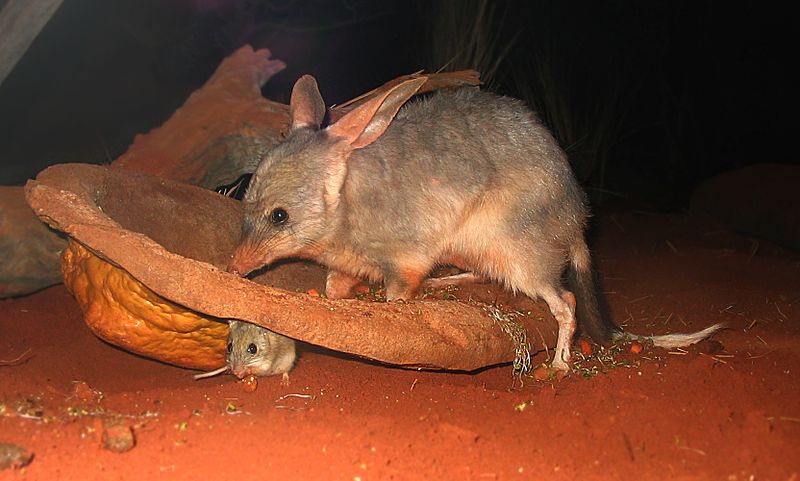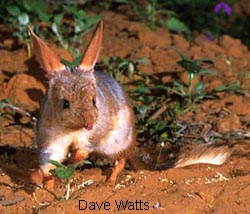
We are going to end our week on the Australian continent by exploring the arid regions of central Australia as we look for an animal known as the “Rabbit-Eared Bandicoot”. Of course, this particular animal is better known as the Bibly. Other names for this unique creature include Dalgyte, Pinkie or the Greater Bibly. Actually, a lot of people still refer to this species as the Greater Bibly in an attempt to distinguish it from the Lesser Bibly, which went extinct in the 1950’s. Let’s find out if today’s featured animal will join their cousins in the extinction hall of fame, shall we?
The Decline of the Bibly
Not surprising the Greater Bibly population is on the decline as a result of habitat destruction, predation by non-native animals and competition with other animals such as those pesky but successful rabbits. While we don’t know exactly how many individuals remain in the wild, we do know that at one point they use to cover more than 70% of the mainland and were actually quite prolific. Fast forward to 2012 and these animals are barely clinging on to the edges of a few of the arid areas.

Save the Easter Bibly
Luckily, there have been some major efforts to ensure the population thrives once again. The most interesting attempt is by identifying the Bibly as the true Easter “Bunny” in Australia. That’s right, it may actually be the Greater Bibly that delivers chocolate and candy to kids all over the land down under. A portion of the proceeds from selling chocolate Easter Biblies actually goes to the conservation of this special species.
No Place Like Home
When not delivering chocolate to the kiddies, the Greater Bibly enjoys a modest life feeding on insects, spiders, seeds, fruit and of course the ever delicious fungi. Other than that, they enjoy spending their in their underground homes. Oh yeah, I forgot to tell you they have very powerful forelimbs and incredibly thick claws which they use for digging complex tunnels. These crafty little creatures are known for creating up to a dozen burrows throughout its home range and are usually all connected. They use this subterranean homes to shelter them from the heat of the day and of course to escape those hungry, introduced predators that are helping decimate a population of Easter Biblies.






